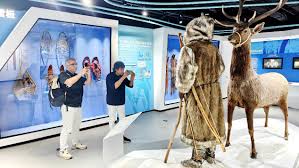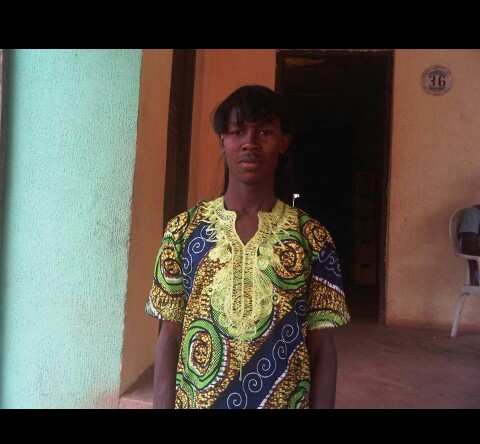Foreign
Yunnan coffee adds new note to global coffee map

By Cui Yin, People’s Daily
Each cup of coffee carries the essence of its birthplace – Brazil’s bold richness, Jamaica’s vibrant
brightness, and Ethiopia’s delicate freshness. Now, Yunnan, in southwest China, is adding a new
chapter to this global narrative, offering a distinctly Chinese flavor that is gaining recognition on
the world stage.
This evolution was on full display at the 2025 First Gems of Yunnan Green Coffee Competition
(Yunnan CoE Pilot Program). Held in Yunnan’s Baoshan, the competition marked a milestone: for
the first time, a CoE-related competition was hosted in Yunnan. Out of 144 entries, 19 coffee
samples received scores above 87 points – qualifying them as world-class – following rigorous
blind tasting by international judges.
The top-scoring beans, grown in Yunnan’s Lincang, fetched a record 13,000 yuan ($1,813.65) per
kilogram at auction, setting a new benchmark for Chinese coffee sales. More importantly, the
competition placed the province into the purview of one of the world’s most authoritative coffee
evaluation systems, signaling its transformation from a raw material supplier into a standard-setter
in the global coffee sector.
Founded in Brazil in 1999, the CoE has reshaped the coffee industry by combining competition
with transparent auction mechanisms. Information about bean variety, processing methods,
pricing, and producers is made publicly available, setting new benchmarks for traceability and
quality.
During the competition, each carefully selected coffee underwent an rigorous evaluation: roasting,
grinding, weighing, and on-site brewing, followed by multiple cupping sessions. A panel of over a
dozen professional judges evaluated each sample on cleanliness, sweetness, acidity, mouthfeel,
and flavor complexity. A Brazilian farmer named Oliveira, whose beans scored an impressive 90
points, could barely contain his excitement.
Over the past two decades, CoE competitions have been hosted in more than ten countries,
spotlighting emerging producers in Honduras and Costa Rica. This has expanded the global map
of valued coffee-producing regions, raising both quality standards and farmer incomes.
Producing high-quality coffee requires a combination of ideal natural conditions and painstaking
cultivation. The best coffee regions are typically mountainous at elevations above 1,000 meters,
with marked differences between day and night temperatures and clearly defined wet and dry
seasons – conditions that also pose greater challenges and management costs.
Yunnan, located in the global golden belt for coffee cultivation, boasts a coffee-growing history of
over a century and now produces 98 percent of China’s total coffee output. Recent advancements
in variety improvement, standardized farming practices, and processing technologies have
propelled Yunnan forward: the proportion of specialty-grade beans rose from 40 percent in 2022 to
70 percent in 2024, while deep processing rates jumped from 60 percent to 85 percent. These traits
have helped turn Yunnan coffee into a byword for premium quality.
Coffee, as a global commodity, embodies the convergence of civilizations across continents. In
China, its popularity has surged in recent years. Shanghai has overtaken New York and London to
become a city with the highest number of coffee shops in the world. Among younger generations,
coffee drinking has become both a social ritual and a lifestyle symbol. This cultural adaptation
reflects a broader ethos in Chinese civilization: the principle of harmony without uniformity, an
openness to global influences, seamlessly woven into a distinctively Chinese context.
Foreign
Discovering culture and friendship in China’s ‘Snow Capital’ Altay

By Huan Xiang, Han Liqun, Hu Renba
Altay Prefecture, located in the northwest frontier of China, sits in the northeast part of Ili Kazak autonomous prefecture in the north of Xinjiang Uygur autonomous region. It borders Mongolia to the east, Kazakhstan to the west, and Russia to the north.
From the pristine Kanas Lake, hailed as “a pure land on earth,” to the majestic landscapes of Koktokay and to the millennia-old rock paintings that earned Altay its global reputation as the “cradle of skiing,” this land is distinguished by its breathtaking natural beauty and profound cultural heritage.
“Come here, try our kebabs!” called out a man in slightly accented Mandarin. He is Percev Timofei Nikolayevich, affectionately known as Jima, a Kazakh national who now co-owns a barbecue restaurant in Beitun, Altay Prefecture, with his Chinese wife, Guan Xinlan.
Their story began at the Jeminay Port, a long-standing border crossing at the convergence of China, Kazakhstan, Russia, and Mongolia. With over a century of trading history, the port has long served as one of the most accessible gateways for China’s commerce with the three neighboring countries.
Since reopening more than 30 years ago, it has quickly regained its role as a regional trade hub. Spotting the opportunity, Guan opened a small eatery near the port in 2005 and learned Russian to serve foreign customers.
Jima, a long-haul truck driver on the China-Kazakhstan route, soon became her de facto language tutor. Known for his warmth and generosity, he helped Guan learn Russian while also supplying her with specialty ingredients from Kazakhstan. Their relationship blossomed, and the couple married in 2009. Jima chose to settle in Altay, where he now helps run their growing business.
In recent years, improved customs efficiency and a mutual visa exemption agreement between China and Kazakhstan have significantly facilitated cross-border movement. For Jima’s family, the prosperity of the port has laid the foundation for a fulfilling life. The booming popularity of Altay as a cultural and tourism destination has opened new opportunities. In April this year, they relocated their restaurant to Beitun, expanding their reach with signature Russian-style kebabs.
From truck driver to entrepreneur, Jima has made Altay his second home. “Altay is beautiful and well-connected, attracting visitors from neighboring countries and beyond,” he said.
Altay’s mountainous terrain is covered in snow for nearly a quarter of the year. In 2018, China’s National Climate Center recognized Altay as the “Snow Capital of China.” The region’s core ice-and-snow area spans more than 30,000 square kilometers, comparable to the Alps in Europe or the Rockies in North America, making it one of the world’s premier destinations for ski tourism.
In 2005, a herder discovered ancient cave paintings in an Altay valley depicting humans skiing on primitive boards with a single pole in hand to hunt. Confirmed by researchers, these drawings represent the earliest known evidence of human skiing activities, dating back between 10,000 and 20,000 years ago.
At an international seminar on ancient skiing culture held in Altay in January 2015, more than 30 experts from 18 countries, including Norway, Sweden, and Finland, reached a consensus recognizing Altay as the birthplace of human skiing.
Nestled in the Altay Mountains, Altay is often described as “a city built within a ski resort.” Its Jiangjunshan International Ski Resort, just 1.6 kilometers from the city’s central square, holds a national 5S alpine skiing destination. With annual snowfall depth exceeding two meters, its light, fluffy powder snow has earned it the nickname “Asia’s powder snow paradise.”
The resort also reflects the growing internationalization of China’s winter sports. “We’ve seen an increase in foreign visitors in recent years, from tropical countries like Malaysia to traditional winter sports nations such as Russia, South Korea, and Japan,” said Li Xia, head of the Jiangjunshan Mountain Ski Academy.
Altay has rapidly expanded its ski infrastructure in recent years. Apart from major resorts such as the Jiangjunshan and Koktokay international ski resorts, recreational ski facilities have been established in every county. During the most recent snow season, Altay welcomed 1.408 million ski tourists, a 23.37 percent year-on-year increase.
In Altay, traces of early human skiing meet the vibrancy of a modern, international winter sports hub. With snow as a bridge and culture as its core, this borderland continues to foster stories of friendship and connection.
Foreign
Shared development: a strategic response to global challenges
By He Yin, People’s Daily
On September 23 local time, China hosted the High-Level Meeting on Global Development Initiative (GDI) at the United Nations (UN) headquarters in New York, announcing new steps to advance the initiative with the international community. A statement was issued at the meeting, reaffirming the consensus to prioritize development and deepen cooperation under the initiative.
At a time when global development faces challenges, China is committed to building consensus and mobilizing international cooperation to drive the GDI forward, injecting strong impetus into addressing development difficulties worldwide and accelerating the implementation of the 2030 Agenda for Sustainable Development.
Development remains an eternal theme of human society and the key to people’s well-being. The UN Charter enshrined development as one of the organization’s founding purposes.
In September 2021, Chinese President Xi Jinping proposed the Global Development Initiative at the general debate of the 76th session of the UN General Assembly. With the broadest interests of humanity in mind, he called on all parties to stay committed to development as a priority, to a people-centered approach, to benefits for all, to innovation-driven development, to harmony between man and nature, and to results-oriented actions.
Since its launch, the GDI has provided a practical framework for renewing global cooperation on common development. Against the backdrop of rising unilateralism and protectionism, which have severely undermined international development cooperation, the world economy has lost momentum, and the development divide between the North and the South has continued to widen.
In this increasingly challenging environment, the GDI has gained relevance and traction as a guiding framework for reinvigorating international development cooperation. To date, over 130 countries and international organizations have taken part in the implementation of the GDI. The UN has established a GDI implementation work group, and the China-Africa-UNIDO Center of Excellence has been inaugurated.
As China’s proposals turn into international consensus and the country’s visions for inclusive development translate into concrete actions, the GDI is increasingly recognized as a global public good aligned with the needs of the times.
UN Secretary-General Antonio Guterres affirmed that the GDI is totally compatible with the Sustainable Development Goals (SDGs) and directly addresses the development challenges confronting the international community.
China has always championed win-win cooperation and common development, advocating joint efforts to make the development pie bigger. The GDI embodies this approach through concrete action.
At a time when some developed countries have fallen short on development-finance commitments or reduced support for international institutions, the initiative has mobilized tangible resources and partnerships to support common progress.
In the past four years, the initiative has mobilized more than $23 billion to support the development and revitalization of the Global South, and launched over 1,800 cooperation projects. From technological cooperation to capacity building, from poverty reduction and education to the digital economy, from high-yield rice to fungus-based processing, and from child nutrition and health to women’s economic empowerment, GDI cooperation has delivered tangible benefits and strengthened local development capabilities.
These efforts have demonstrated that China’s philosophies and agenda of common development not only help countries address pressing challenges, but also provide strong momentum for advancing the broader cause of global development.
Facing new circumstances and challenges, China remains firmly committed to advancing common development. It recently announced that it would forgo any request for new special and differential treatment in current and future World Trade Organization negotiations. This decision demonstrates China’s firm commitment to safeguarding the multilateral trading system and carries clear development significance. It will help refocus the multilateral trading system on development priorities and enhance the inclusiveness and universality of international trade.
China also announced a package of concrete measures: over the next five years, it will implement another 2,000 “small and beautiful” livelihood projects in developing countries; establish a funding program dedicated to digital capacity-building within the Global Development Capital Pool; put forward a new AI+ International Cooperation Initiative; carry out 200 maritime development cooperation projects; and implement a Clean Stove Project in developing countries.
These initiatives will accelerate the implementation of the UN 2030 Agenda for Sustainable Development, and enable more developing countries to seize the opportunities of technological transformation and green transition.
On the path of development, no country or individual should be left behind. This simple yet profound vision animates the GDI and is integral to building a community with a shared future for humanity. China stands ready to work with all parties to use the GDI as a platform to upgrade cooperation, prioritize practical actions, and achieve shared benefits, so that the fruits of development will better benefit people around the world.
Foreign
Farming made easy: how an APP is revolutionizing rural harvests in E China’s Jiangxi

Yang Yanfei, People’s Daily
At 8 p.m. in Longyun village, Yantian township, Anfu county, Ji’an, east China’s Jiangxi province, Li Minggui reclined in his rocking chair after a long day, chatting with his wife about the rice harvest.
Li is the head of the Yantian comprehensive agricultural service center. While most parts of Jiangxi are racing to complete the double-cropping rice season, hilly villages like Longyun began harvesting their single-cropping rice in early September.
As the couple spoke, Li’s phone rang. “Hello, this is from Walou village in Xukeng township. I got your number through the Ganjitong farm machinery dispatch system. Do you have time tomorrow? The weather looks good for drying grain,” said a farmer on the line.
“No problem, but the dew is heavy in the morning, so you have to wait until 9 a.m. I’ll send our veteran, Min Lixiang, to lead the team,” Li replied.
At 3 p.m. the next day, Min and his team had wrapped up work in Walou village and were already operating their harvester in Tuqiao village, also in Yantian. The machine roared through the paddies, pulling in golden stalks of rice with each pass.
On the edge of the field, Min carefully maneuvered the machine, adjusting angles to sweep up even stray stalks with precision. Watching closely, Li gave him a thumbs-up: “Min’s got real skills. He keeps losses to a minimum. Farmers from all around ask for him during harvest.”
“We can always count on Min,” said local farmer Zhou Hailiang with a grin. “Yields look solid this year, around 700 kilograms per mu (about 467 kilograms per hectare).”
“I signed up for full-service farm management this season. Li has been guiding me through every step,” Zhou added, gesturing toward Li.
“With the Ganjitong app, farmers can order services just like takeout, from seedling cultivation and plowing to transplanting, pest control, harvesting, and drying,” Li explained. He keeps over 300 farmers’ contacts on his phone and handles dozens of requests daily. The center’s five harvesters have been running full tilt since the season began.
Anfu county has established several such agricultural service centers, offering integrated, one-stop solutions that cover the entire cycle from seed to harvest.
As one of Jiangxi’s major grain-producing counties, Anfu manages roughly 880,000 mu (around 58,700 hectares) of cultivated land. The combination of full-service centers and digital, on-demand platforms has given local farmers more flexibility and peace of mind.
According to Ouyang Suqin, head of the agricultural machinery division at the county’s rural vitalization service center, data from the Ganjitong system is integrated into a county-wide smart agriculture platform that manages more than 500 pieces of farm machinery. During peak harvest periods, centralized dispatch has boosted efficiency by over 30 percent and halved the average waiting time for farmers.
That evening, Li’s phone rang again. “According to the county platform, all of Yantian’s machines are booked, but Guashe township has already finished harvesting and has idle equipment. You can redeploy them,” Ouyang informed Li.
“The system gives us real-time access to machine availability across the entire county, allowing us to allocate resources where they’re most needed,” Li said.
As night fell, harvesters returned one after another to the service center’s garage. Squatting beside a harvester, Li wiped down the blades carefully. “Rice takes half a year to grow. If we put in a little more care, the farmers will see a better return,” he noted.
-

 Uncategorized5 years ago
Uncategorized5 years agoFG, states urged to harness flooding for ranching, others with technology – Agbaje
-

 Headlines10 years ago
Headlines10 years agoBreaking: EFCC seals Borno House of Assembly, as Hon members take to their heels
-

 News11 years ago
News11 years agoNigeria Security Operatives Stage Manhunt For Homosexual Perpetrator
-

 News9 years ago
News9 years agoHow 21-year-old Girl fled community over accusation of lesbianism
-

 News10 years ago
News10 years agoYobe Gov Moves Against Deputy
-

 Opinion6 years ago
Opinion6 years ago7 signs she has friend zoned you
-
Technology4 years ago
Online job placement company headhunts women
-

 Headlines9 years ago
Headlines9 years agoBorno Dep Gov Abducts Another Church Leader





